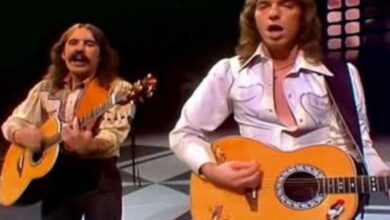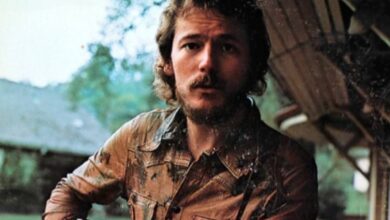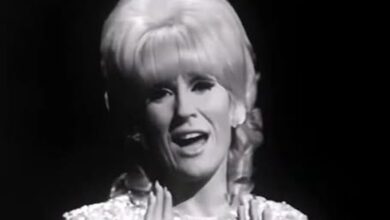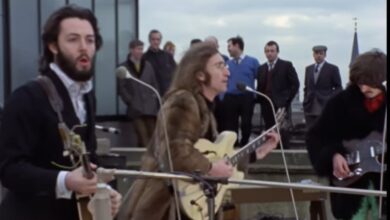Marty Robbins’ “Gunfighter Ballads and Trail Songs” Blazes a New Trail for Country and Western in 1959
When “Gunfighter Ballads and Trail Songs” was released in 1959, it immediately distinguished itself as a groundbreaking album in both country and popular music. More than just a collection of Western-themed tunes, the record became a touchstone for storytelling and musical innovation, sparking a resurgence in the American cowboy mythos. The album’s biggest hit, “El Paso,” not only topped the Billboard Hot 100 but also became the first country song to win the Grammy Award for Best Country & Western Recording, a testament to its crossover power and wide-reaching appeal.
Marty Robbins, born Martin David Robinson in Glendale, Arizona, brought an authenticity to Western music that few others could claim. Raised among the canyons and deserts of the American Southwest, Robbins developed a deep love for cowboy stories and songs early in life. His entry into the music world was marked by an ability to blend genres, moving seamlessly from country to pop, and even dabbling in rockabilly. What truly set him apart, however, was his warm tenor voice and gift for vivid, cinematic storytelling—a combination that made every song feel like an epic adventure.
The inspiration for “Gunfighter Ballads and Trail Songs” grew out of Robbins’ fascination with the legends and landscapes of the Old West. He wanted to craft an album that would transport listeners to a time of outlaws, lonely trails, and dramatic showdowns. The songs, many penned by Robbins himself, draw from traditional Western ballads as well as his own imagination, creating a tapestry of tales that evoke the spirit of a bygone era. The centerpiece, “El Paso,” tells the story of love, jealousy, and fate in a Mexican cantina—an ambitious narrative told with an almost cinematic scope.
Recording for the album took place at the legendary Bradley Studio in Nashville, under the watchful eye of producer Don Law. Robbins insisted on live takes to capture the spontaneous energy of his performances. The sessions featured a cadre of Nashville’s finest musicians, including Grady Martin on guitar, whose Spanish-flavored licks gave “El Paso” its distinctive flavor. Harmonies by vocal trio The Glaser Brothers added emotional depth to the ballads, while Robbins’ own nuanced delivery brought each character and scene to life.
Upon release, “Gunfighter Ballads and Trail Songs” was met with immediate acclaim. “El Paso” quickly climbed to No. 1 on both the country and pop charts, spending weeks in the top ranks and making Marty Robbins a household name. The album itself remained on the charts for months, a rare achievement for a country record in the late 1950s. Robbins’ artistry was recognized with multiple awards, including that historic Grammy for “El Paso,” further legitimizing country music as a force in the wider American musical landscape.
Culturally, the album arrived at a moment when the Western genre was resurgent in film and television. Robbins’ songs tapped into the collective imagination, providing an aural counterpart to the cowboy heroes and villains then filling movie screens. The album bridged audiences: traditional country fans were captivated by Robbins’ authenticity, while mainstream listeners were drawn in by the compelling stories and pop sensibility. In many ways, the record helped bring Western themes back to the forefront of American consciousness.
For Robbins, “Gunfighter Ballads and Trail Songs” marked a turning point. Already a respected artist, he was now a star of national and international stature. The album led to headlining tours and regular appearances on radio and television. It expanded his fan base beyond the South and Southwest, earning him admirers across the country and around the world. The success gave Robbins the freedom to explore other musical avenues while always staying true to his Western roots.
The influence of the album was felt not only in country music but also in other genres. Artists ranging from Johnny Cash to Bob Dylan took inspiration from Robbins’ narrative style and ambitious compositions. The record’s blend of storytelling, melody, and vivid imagery set a new standard, encouraging songwriters to take risks and explore new narrative possibilities in popular music.
“Gunfighter Ballads and Trail Songs” spawned numerous covers and renditions, particularly of “El Paso.” Artists like The Grateful Dead and Michael Martin Murphey offered their own interpretations, each bringing something new to Robbins’ original vision. Even outside the world of country, the album’s influence could be felt, as its songs became standards for folk and Americana artists.
The album’s release coincided with a period of great change in Robbins’ personal life. Riding the wave of success, he was able to purchase a ranch and live out his cowboy dreams, further fueling the authenticity of his music. At the same time, the demands of stardom placed new pressures on him, yet he continued to produce music that reflected both his personal journey and the broader currents of American culture.
Decades after its release, “Gunfighter Ballads and Trail Songs” remains a fixture on classic country radio and is regularly cited in lists of the greatest albums of all time. Its songs have appeared in countless films, television shows, and commercials, keeping their spirit alive for new generations of listeners. The pink-clad Robbins on the album cover became an iconic image—instantly recognizable and symbolic of a golden age in country music.
The impact of the album went far beyond sales and chart performance. By weaving together vivid stories, authentic instrumentation, and innovative production, Robbins helped redefine what a country album could be. He elevated the Western ballad from simple campfire song to epic narrative, opening the door for more ambitious works in the genre and beyond.
In later years, Robbins was honored with induction into the Country Music Hall of Fame, and “Gunfighter Ballads and Trail Songs” continued to receive accolades from critics and fellow musicians. Its endurance is a testament to Robbins’ artistry and the timeless appeal of the cowboy story. The album’s influence can still be heard today in the music of countless artists who draw inspiration from its blend of tradition and innovation.
Ultimately, “Gunfighter Ballads and Trail Songs” endures because it captures something essential about the American spirit—a longing for adventure, a love of storytelling, and the timeless appeal of heroes and outlaws. Marty Robbins’ vision brought these elements together in a way that feels as vital today as it did in 1959. His songs remind us that, no matter how much the world changes, the romance of the open range and the drama of the gunfighter’s tale will always have a place in our hearts.
For Marty Robbins, this album stands as the crowning achievement of a remarkable career. For listeners, it remains a gateway to another time and place, a world of dusty trails, moonlit deserts, and unforgettable stories. Its legacy is one of innovation, artistry, and the enduring power of music to transport us beyond ourselves—a true Western classic that will ride on as long as songs are sung.





